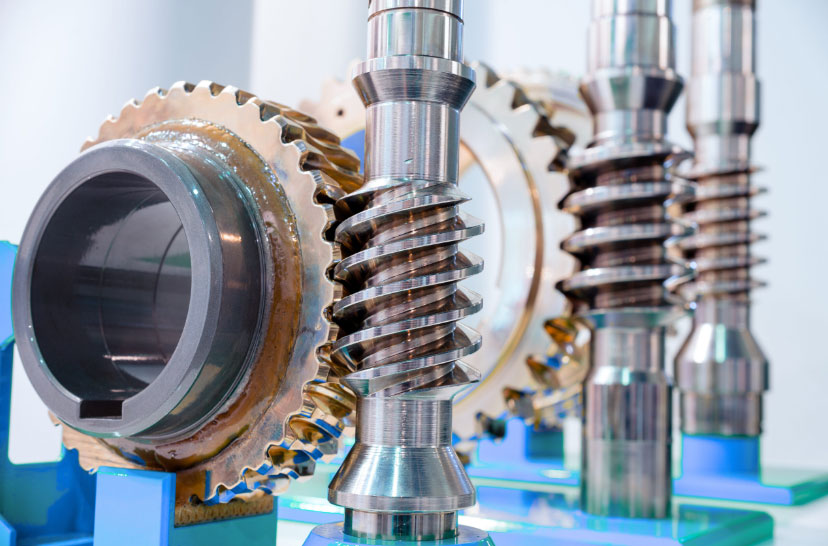This study presents an efficient modeling methodology for worm gears using CATIA software and validates its accuracy through finite element analysis (FEA) and multi-body dynamics simulations. The proposed approach addresses challenges in achieving precise meshing characteristics for specialized industrial applications.
1. Geometric Modeling Methodology
The modeling process begins with parameter definition based on the ZI-type worm gear specifications for a valve actuator reducer:
| Parameter | Worm | Worm Wheel |
|---|---|---|
| Number of threads/teeth | 1 | 40 |
| Pitch diameter (mm) | 20.00 | 72.00 |
| Module (mm) | 1.80 | |
| Lead angle (°) | 5.14 | – |
The worm modeling employs CATIA’s helical sweep function with axial tooth profile parameters:
$$ s_{x1} = \frac{p_x}{2} = 2.83\ \text{mm} $$
$$ h_{a1} = h_a^* m = 1.8\ \text{mm} $$

2. Meshing Characteristics Analysis
The contact stress distribution was analyzed using ANSYS with material properties:
| Component | Material | Young’s Modulus (GPa) | Poisson’s Ratio |
|---|---|---|---|
| Worm | 42CrMo | 212 | 0.28 |
| Worm Wheel | QAL10-4-4 | 114 | 0.34 |
The maximum contact stress at tooth root was calculated as:
$$ \sigma_{Hmax} = 241.36\ \text{MPa} $$
3. Dynamic Behavior Analysis
ADAMS simulations were conducted using Hertz contact theory:
$$ K = \frac{4}{3}R^{1/2}E^* $$
$$ \frac{1}{R} = \frac{1}{R_1} + \frac{1}{R_2} $$
$$ \frac{1}{E^*} = \frac{1-\mu_1^2}{E_1} + \frac{1-\mu_2^2}{E_2} $$
Dynamic meshing forces at different speeds:
| Speed (r/s) | Peak Force (N) | Mean Force (N) |
|---|---|---|
| 1.3 | 677.49 | 621.97 |
| 2.6 | 677.69 | 621.88 |
| 3.9 | 677.87 | 621.72 |
4. Rigid-Flex Coupling Analysis
Modal analysis revealed first-order natural frequency:
$$ f_1 = 874\ \text{Hz} $$
Contact stress comparison between methods:
$$ \text{FEA: } 241.36\ \text{MPa} $$
$$ \text{ADAMS RF: } 228.56\ \text{MPa} $$
$$ \text{Deviation: } 5.3\% $$
5. Experimental Validation
Prototype testing showed:
- Radial runout: 0.024 mm (GB/T 10089-2018 limit: 0.030 mm)
- Contact pattern coverage: 70% (height) × 60% (length)
Fatigue testing demonstrated 1,200 hours continuous operation without observable pitting, meeting mining equipment requirements.
6. Conclusion
The developed CATIA-based modeling methodology enables accurate worm gear design with verification through multi-physics simulations. The 5.3% deviation between FEA and rigid-flex coupling analysis confirms model reliability. This approach significantly reduces development time while ensuring meshing performance for heavy-duty applications.
